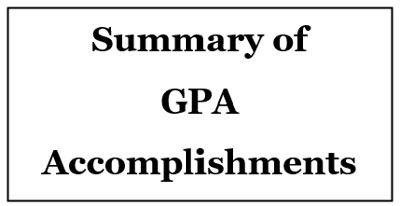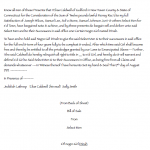What stories do you love to tell about Guilford? Where in Guilford do you take your out-of-town guests? What historic, cultural and natural resources do you like to show off to family and friends who visit? The Guilford Preservation Alliance (GPA) is sponsoring an interactive discussion addressing these kinds of questions at a public forum to be held on September 24 from 7:30 to 9:00 P.M. at the Nathanael B. Greene Community Center. At that time residents of Guilford will have an opportunity to help decide what information is important to share with visitors to their historic town. In turn, that information will be used to help develop plans for the visitor kiosk, a gift from GPA to the town on its 375th birthday. Click here for flyer. [Read more…]
A Message from Our New Co-Presidents
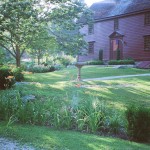 In this, our first Presidents’ Blog entry since being elected as co-presidents at GPA’s June 24, 2013 annual business meeting, we would like to thank outgoing president Harry Haskell for his faithful stewardship of the organization during the length of his tenure as GPA president. [Read more…]
In this, our first Presidents’ Blog entry since being elected as co-presidents at GPA’s June 24, 2013 annual business meeting, we would like to thank outgoing president Harry Haskell for his faithful stewardship of the organization during the length of his tenure as GPA president. [Read more…]
Outgoing President
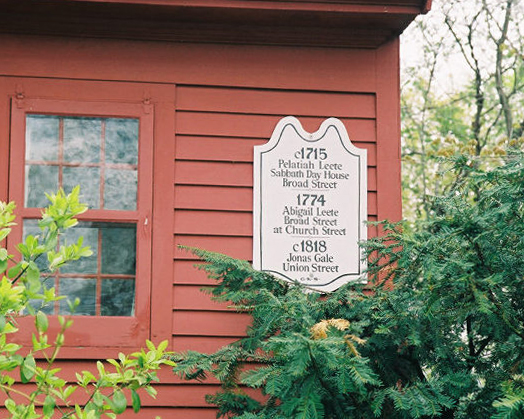 If you ask me what the Guilford Preservation Alliance does, I may have to pause and think: our programs and activities run the gamut from traditional historic preservation to sustainable development and environmental issues. But ask me what the GPA stands for and I can give you a one-word answer: partnership. [Read more…]
If you ask me what the Guilford Preservation Alliance does, I may have to pause and think: our programs and activities run the gamut from traditional historic preservation to sustainable development and environmental issues. But ask me what the GPA stands for and I can give you a one-word answer: partnership. [Read more…]
Grant Received from Connecticut Humanities
Guilford Preservation Alliance (GPA), a non-profit organization, received a grant for $14,300 from Connecticut Humanities (CTH) to enhance visitor experience that will include the story of Guilford’s rich history and culture. The grant enables the GPA to gather insights from residents about what they consider to be Guilford’s most important stories to share with visitors. They will offer several forums to the community, and then through group discussions, develop plans for a visitor kiosk and interpretive signage.
Dr. Nancy Morgan, a heritage development consultant, will facilitate meetings to be held in September, including a Community Forum, a Student Forum, and two focus groups. At these meetings residents will discuss what they consider to be Guilford’s most important historical stories and what resources they would like to share with visitors.
Shirley Girioni, a co-chair of the Tourism Initiative said, “This grant will allow us to move forward in the planning of our project to welcome and inform visitors about our nearly 375 year history on the Connecticut shoreline. It demonstrates that the CTH has confidence in our vision for the development of heritage tourism in Guilford. We are deeply grateful for their financial support and encouragement.”
In 2011, GPA began the Guilford Heritage Tourism Initiative which recognized that the town’s wealth of historic, cultural, and natural resources as well as amenities such as shopping, dining, and visitation, could be focused to increase economic impact through tourism. In 2012, GPA unveiled the Historic Guilford Walking Tours, which attracted over 300 tour-goers its first year. The Heritage Tourism co-chairs, Shirley Girioni and Rob Vavasour, have worked to build strong partnerships with organizations and agencies throughout the town and state, and have worked together to set goals for the future of the initiative.
LED Billboard Update
On April 3, the Planning and Zoning Commission held public hearings on the electronic LED billboard issue (to which we alerted you earlier) and the Town Center South zoning overlay district. [Read more…]
Saving the Farm
Read about the new book Saving the Farm by James T. Powers–check it out on our Guilford Bookshelf.
Planning and Zoning to Consider Allowing LED Billboards
COMMUNITY ALERT
Significant changes have been proposed for Guilford’s signage regulations to allow large billboards that would change message, colors and brightness every 8 seconds. The Planning and Zoning Commission is considering this change at its next meeting. [Read more…]
Illustrated Walking Guide
The first edition of Sarah Brown McCulloch’s Guilford: A Walking Guide, The Green & Neighboring Streets was published in 1989 with principal funding provided by the Guilford Preservation Alliance. In 2012 we presented for the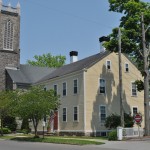 first time an online version of the text with updates from the 2012 revision. Now, in February 2013, we have begun adding photos to this text. For links to this new illustrated version of Sarah Brown McCulloch’s Guilford: A Walking Guide click here. We also have a new illustrated version of our survey of Significant Structures Fifty Years Old or More.
first time an online version of the text with updates from the 2012 revision. Now, in February 2013, we have begun adding photos to this text. For links to this new illustrated version of Sarah Brown McCulloch’s Guilford: A Walking Guide click here. We also have a new illustrated version of our survey of Significant Structures Fifty Years Old or More.
Slavery in Guilford
When we New Englanders write and teach about slavery in the period from the Civil War to the present, we often forget that slavery didn’t exist only in the South. President Lincoln in his Second Inaugural Address urged Americans to “judge not, that we be not judged,” urging forgiveness of our Southern brethren. But Northern slavery, and Northern complicity with Southern slavery, were not rare occurrences. In Guilford, our cultural ancestors benefited from the labor of slaves, and we are lucky to have sources available to open our eyes to the existence of slavery in New England and in early Guilford.
Some of the best recent research into slavery in New England was done by writers from the Hartford Courant a decade ago. “Complicity; How Connecticut Chained Itself to Slavery” (Sept 29, 2002) describes in detail who owned slaves in Connecticut and how both individuals and corporations benefited and profited by the ownership and support of slavery. Robert H. Romer, in his book Slavery in the Connecticut Valley of Massachusetts (2009), while focusing on Deerfield, Massachusetts in the 18th century, shows us who was more likely to own slaves in a New England town or village, and also gives us hints on where to look for proof of slavery in the remaining historical artifacts and documents.
We have been given hints about slavery in Guilford. In North Guilford at the Meeting House Hill Cemetery, we can find the gravestone of the slave Shem. On the Green, we can see the names of African American soldiers who fought and died to preserve the Union and free the slaves in the South. In the Edith B. Nettleton Local History Room at the Guilford Free Library, we can find emancipation documents for Guilford slaves. I am just starting to analyze the census data from the 1790s and early 1800s to help me understand more about these slaves and the community they were a part of.
The question that has stuck in my mind since I first realized that there was, here in Guilford, a measurable slave and free Black population is, “What has happened to that population of slaves and free Blacks and did they find success in their transition from servitude to physical and economic freedom?” As I continue to conduct research, and to hopefully share the information in a more formal way, I wanted to share some of the raw data.
In the 1790 Federal Census, there were about 40 slaves listed in Guilford and about twenty free Blacks. All of the slaves and most of the free Blacks were unnamed. In 1790, the only names listed were the heads of households and the majority of free Blacks and all of the slaves were included within the households of white citizens.
Historically, Connecticut began to prepare to free its slaves by a process of gradual emancipation. They first enacted a law specifiying that a person born to a slave after 1792 was to remain a slave only until his or her 25th birthday. This law was later amended so that the individual would be free after their 21st birthday. Because this law affected only the children of slaves, it allowed slavery to continue into the 1840s.
Interestingly enough, the idea that slavery should be abolished seemed to be enough to change the attitudes of many in Guilford. By the 1800 Federal Census, the number of slaves was cut in half to 20, while the number of free Blacks doubled, leaving the overall number of Blacks in Guilford about the same as a decade earlier.
Another interesting thread to follow is that of Pvt. Henry Wright, who is listed on the Guilford Civil War Monument as fighting and dying while serving with the 54th Massachusetts Regiment, the famed Black regiment. Through census data, I have been able to connect Pvt. Wright to a free Black named Prince, who is one of the few free Blacks listed as “head of household” in the census. If I could find Prince’s background and if he had been a slave, there might be an interesting generational story to tell.
I hope that in journals, letters, family papers, probate records, account ledgers, and colonial records, information will be found to develop a clear picture of slavery in Guilford. I plan to share with my readers via this column the results of my research of this period in our local history.
Dennis Culliton
January 2013
The Economic Benefits of Historic Preservation
We’ve put a link on our website to the Connecticut Commission on Culture & Tourism’s new study on the economic benefits of historic preservation. The report explains how the rehabilitation of our existing building stock helps to create jobs and increase local tax revenue. Read the report right here: 

